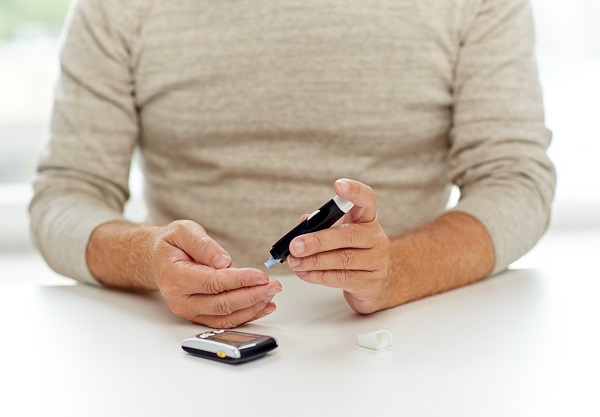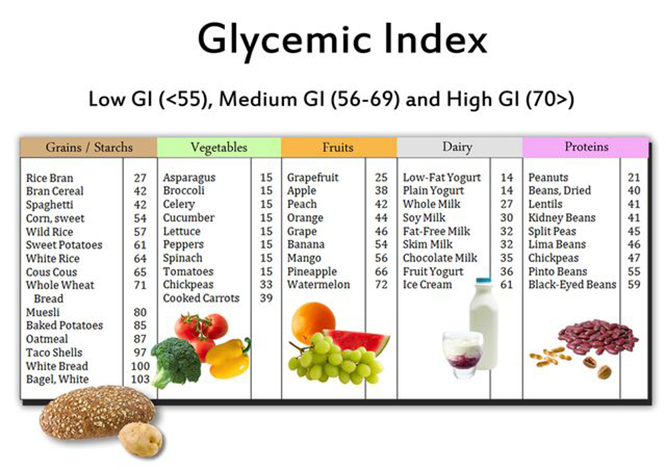For those with diabetes, controlling blood sugar is often a daily struggle. Whether you have Type 1 diabetes or Type 2 diabetes, it’s likely that one of your primary concerns each day is monitoring your blood glucose levels to make sure your blood sugar is in the Goldilocks Zone of just enough and not too much. But while it’s simple to talk to lower your blood sugar, the actual task itself may be challenging.
Contents
1. Check Your Blood Sugar Regularly

It may seem obvious, but knowing what you’re working with is one of the easiest ways to control your blood sugar. Checking your blood glucose levels regularly is key to understanding the behavior of your body, which can make planning for meals and other lifestyle habits much easier. For many with diabetes, checking your blood sugar is a daily task that happens at least once. However, if you’ve noticed lately that your blood sugar spikes or fluctuates too drastically day-to-day, you might want to check your blood sugar more often throughout the day to try and figure out where the spikes are coming from.
Keep a notebook of time and blood sugar levels, as well as notes about what you’ve eaten and what steps you have taken to lower your levels to try to pinpoint the cause of blood sugar spikes and to see what methods to control spikes work best for your unique chemistry.
2. Study the Glycemic Index

You can think about the glycemic index as being your cheat sheet for what you should and shouldn’t eat. Studying the index not only makes it easier to eat worry-free, but it also gives you more power to plan your meals – especially meals that happen outside of the home. It might be a worthwhile project to bookmark the index on your phone, print out a wallet-sized index, or keep the index pinned to your refrigerator.
The glycemic index is separated into three categories of foods. For most diabetics, the best rule of thumb is to make sure most of your diet consists of foods in the low category. However, if done mindfully, you can incorporate small amounts of medium or high-glycemic foods into your regular diet.
Low
Foods low on the index include:
-
- Oats
- Museli
- Whole wheat
- Quinoa
- Sweet potatoes or yams
- Beans and lentils
- Asparagus
- Broccoli
- Celery
- Bran cereal
- Cucumber
- Spinach
- Tomatoes
- Grapefruit
- Yogurt
- Milk
- Eggs
- Cheese
- Peanuts
Medium
Foods medium on the index include:
-
- Whole grains
- Pita bread
- Brown or wild rice
- Chickpeas
- Popcorn
- Banana
- Mango
- Carrots
- Pineapple
High
Foods high on the index include:
-
- White bread
- White rice
- White pasta
- Granola
- Potatoes
- Taco shells
- Watermelon
- Ice cream
- Corn chips
- Pumpkin
- Soda
- Donut
- Maple syrup
3. Avoid White Bread and Refined Foods

While having a balanced diet is more about moderation than restriction, there are some hard-and-fast rules about foods that you should always do your best to avoid, such as refined foods. Refined foods are those that have been very processed, as they usually have more sugar in them. Usually, these foods are found in the high category of glycemic index, and white bread is the worst offender of all. White bread includes white sandwich bread, French bread or breadsticks, some pizza, croutons, pretzels, and many pastries.
4. Increase Fiber to Control Blood Sugar Spikes

Foods that are rich in fiber are usually complex carbohydrates, which means they take longer for the body to metabolize and convert into energy – or sugar. The more complex your carbohydrates are, the longer it will take for sugar to be released during digestion, which is why a fiber-rich diet is key to controlling blood sugar spikes.
In fact, if you are in the middle of a blood sugar spike, one of the easiest natural remedies is to eat a food that is rich in fiber. Such quick snacks include:
-
- Cantaloupe
- Grapefruit
- Cucumber
- Raisins
- Oatmeal or oat snacks
- Sugar-free fiber snacks
5. Stay Hydrated

The sugar in your blood is water-soluble, which means that it can dissolve in water and is eliminated in your urine after being filtered by your kidneys. What this means for diabetics seeking to control blood sugar is that the more water you drink, the more quickly your body can eliminate excess sugar. For that reason, it’s important to stay hydrated at all times, not just in the middle of a blood sugar spike. Most adults should be drinking 6 to 8 glasses of water a day or 48oz.
6. Exercise Daily

Daily moderate exercise can help boost your metabolism and, in turn, speed up how quickly your body digests and processes your food. The faster your metabolism, the less likely you are to store excess fat and sugar. Ideal moderate exercise for boosting your metabolism is centered around cardiovascular health, such as dancing, running, jogging, walking, swimming, or jump-roping.
7. Control Stress

The human body has many interesting responses to consistently high levels of stress, such as headaches or migraines, weight gain, sleep disturbance, chest pains, palpitations, and body aches. Stress can also directly impact our metabolism, specifically how we store and process sugar. In other words, chronic stress is an easy way to have a blood sugar spike.
Some ways you can control stress include relaxation techniques, prioritizing obligations, taking a mental health day, breathing exercises, and other self-care techniques. Even 10 to 15 minutes a day of quiet time can improve your stress levels.
8. Talk to Your Doctor

You can also speak with your doctor about other methods to lower your blood sugar, such as new medication or adjusting the medication you are currently on. It’s sometimes the case that your current dosage needs to be adjusted, so talk to lower your blood sugar with your doctor to find a regimen that works for you.
While monitoring and controlling your blood sugar might be a constant daily concern, learning how to strike the right balance for your blood glucose levels is a matter of finding the right tricks that work for you. To learn more about diabetic health, please visit Aging Healthy Today!


